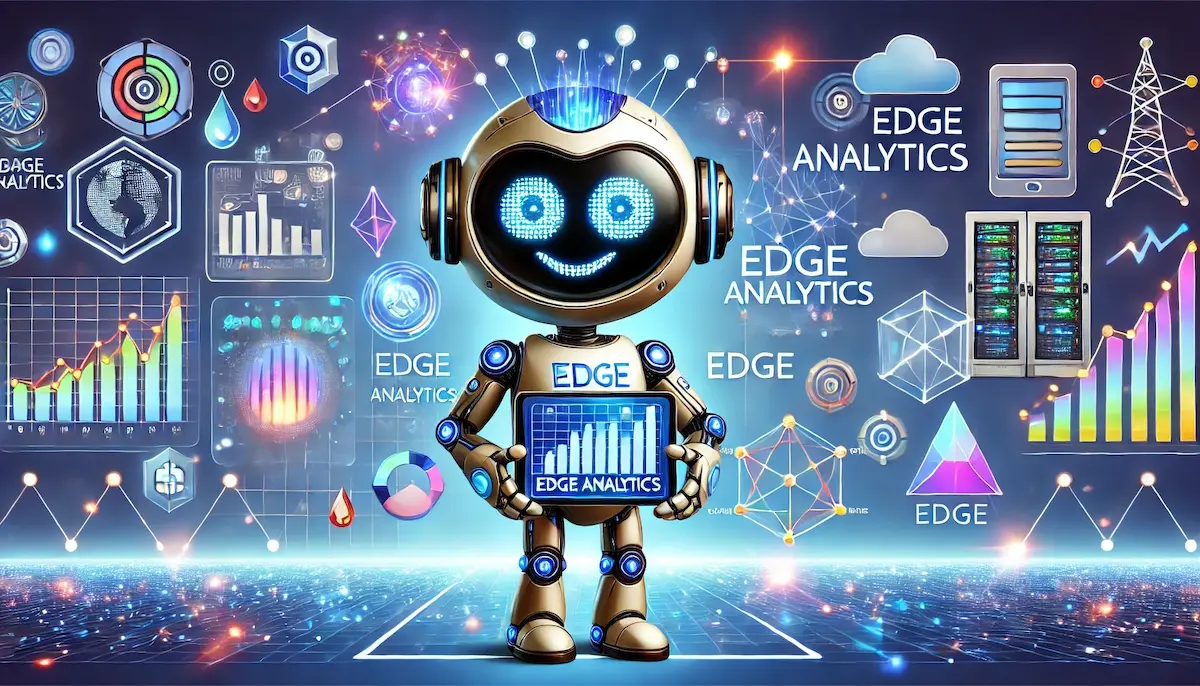Edge analytics is a transformative approach to data processing and analysis that takes place at the edge of a network, near the data source, rather than in a centralized data center or cloud. This method enables real-time insights and decision-making, enhancing efficiency and reducing latency.
What is Edge Analytics?
Edge analytics involves processing and analyzing data at the point of generation, such as sensors, devices, or local servers, instead of sending all data to a central location for analysis. By doing so, it reduces the time required to gain insights and act on the data, making it particularly valuable for applications where real-time responses are crucial.
Key Components of Edge Analytics
Edge Devices
These are the data-generating devices, such as sensors, IoT devices, and industrial machines. They collect and sometimes pre-process data before sending it to edge servers.
Edge Servers
Located close to the data source, edge servers handle more complex data processing tasks. They can aggregate data from multiple edge devices, perform advanced analytics, and make real-time decisions.
Connectivity
Reliable and fast connectivity is essential for edge analytics. It ensures that data can be quickly transferred between edge devices and servers, and, if necessary, to central systems for further analysis.
Benefits of Edge Analytics
Real-Time Processing
Edge analytics provides immediate insights by processing data locally. This is crucial for applications requiring real-time decision-making, such as autonomous vehicles, industrial automation, and smart cities.
Reduced Latency
By analyzing data at the edge, the latency associated with sending data to a central server is minimized. This is particularly important for time-sensitive applications where delays can have significant consequences.
Enhanced Security and Privacy
Processing data at the edge can improve security and privacy by minimizing the amount of sensitive data sent over the network. This reduces the risk of data breaches and ensures compliance with privacy regulations.
Bandwidth Optimization
Edge analytics reduces the need to transmit large volumes of raw data to central servers, optimizing bandwidth usage and lowering costs associated with data transmission and storage.
Scalability
As the number of connected devices grows, edge analytics provides a scalable solution for data processing. It enables the efficient handling of vast amounts of data generated by IoT devices without overloading central systems.
Applications of Edge Analytics
Industrial IoT
In industrial settings, edge analytics is used to monitor and analyze data from machinery and equipment in real time. This enables predictive maintenance, reducing downtime and optimizing operational efficiency.
Smart Cities
Edge analytics powers smart city applications by processing data from traffic lights, surveillance cameras, and environmental sensors locally. This facilitates real-time traffic management, enhanced public safety, and improved resource management.
Healthcare
In healthcare, edge analytics is applied to wearable devices and remote monitoring systems to provide immediate health insights and alerts. This is crucial for patient monitoring and emergency response.
Retail
Retailers use edge analytics to analyze data from in-store sensors and cameras to optimize store layouts, manage inventory, and personalize customer experiences in real time.
Autonomous Vehicles
Autonomous vehicles rely on edge analytics to process data from sensors and cameras in real time, enabling safe and efficient navigation and decision-making.
Challenges of Edge Analytics
Data Management
Managing and integrating data from numerous edge devices can be complex. Ensuring consistency, accuracy, and security of data across the network is a significant challenge.
Limited Computing Power
Edge devices and servers may have limited computing power compared to central data centers. Designing efficient algorithms that can run on these constrained devices is crucial for successful edge analytics implementation.
Security Risks
While edge analytics can enhance security, it also introduces new risks. Protecting edge devices and servers from cyber-attacks is essential to ensure the integrity and confidentiality of data.
Scalability
Scaling edge analytics solutions across a large number of devices and locations requires robust infrastructure and management systems to handle the complexity and volume of data.
The Future of Edge Analytics
The future of edge analytics looks promising, with advancements in technology driving its adoption across various industries. The proliferation of IoT devices, 5G connectivity, and AI will further enhance the capabilities and applications of edge analytics. As organizations continue to seek real-time insights and more efficient data processing solutions, edge analytics will play a pivotal role in shaping the digital landscape.
Blockfine thanks you for reading and hopes you found this article helpful.
